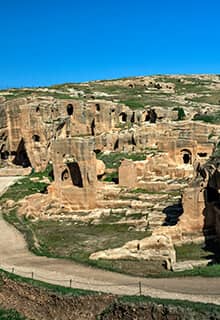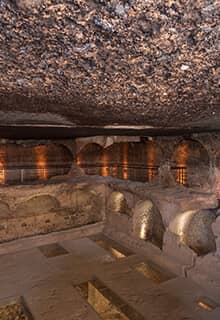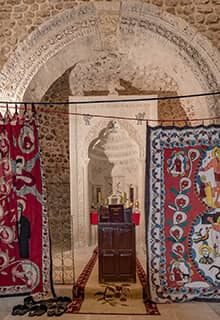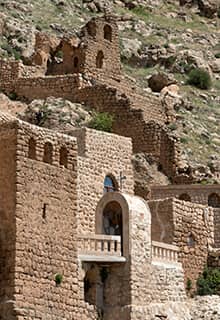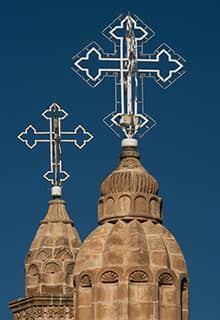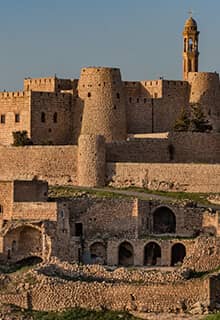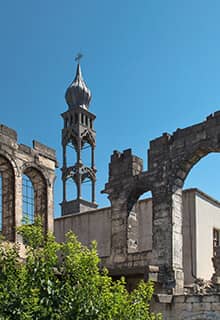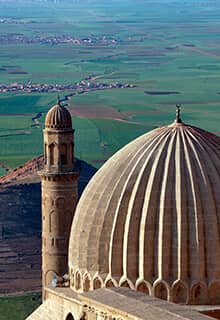

Timeless City of Tolerance
Mardin – Midyat
Mardin is situated at the center of Mesopotamia, the incredibly rich region between the two mighty rivers, Tigris and Euphrates. As a result, it is a fortunate city, blessed by history. Southeastern Türkiye, at the hearth of Upper Mesopotamia, is a multireligious and multicultural province. Mardin was the seat of the Syriac Orthodox Patriarchate of Antioch for hundreds of years. People of many beliefs live in Mardin and carry within them the legacy of the people and cultures that came before them.
Deyrul Zafaran Monastery (Mor Hananyo in Syriac or Monastery of St. Ananias) is one of the oldest active monasteries in the world. It was built in the fourth century on the site of a 4,500-year-old pagan temple dedicated to the worship of the sun.
Following the Seljuk Turks, the Artuqid dynasty chose Mardin as its capital due to the city’s structure as an impregnable natural fortress. The influence of the Artuqids on local life can be seen in the numerous Artuqid structures in Mardin which outnumber those from the Ottoman era.
The ancient city of Dara, 30 kilometers from Mardin’s city center, deserves to be visited. The city was an important settlement on the Silk Road. Founded in AD 506, the city was first named Anastasiopolis and due to its location on the historical Silk Road, it became important in religious, social, and commercial terms. The city was a location where people of different faiths, such as Assyrians, Muslims,
Yazidis, and Christians, gathered throughout centuries. Excavations so far have unearthed architectural ruins from different historical eras.
The Mardin Assyrian Church of the Virgin Mary and Patriarchate, built in 1860, now serves as the Mardin Museum. In the church, the patriarch's throne and the preaching area are decorated with elegant wood carving. The Patriarchate, which was built in 1895, was transferred to the Ministry of Culture in 1988. It was restored and opened to the public as a museum in 1995.
Mor Behnam (Kırklar) Church was built in the 5th century. It attracts attention with its three front doors, the fine stonework displayed in the niche, its 400-year-old wooden mihrab doors, the 1,500-year-old root-dyed curtains, and the bell tower house in its wide courtyard. In 1170, the sacred relics of forty martyrs were brought to this church. Today, the structure serves as the Metropolitan Church of Mardin.
The Mor Gabriel Monastery (Monastery of Saint Gabriel), also known as Deyrulumur, was founded in AD 397 on the Tur Abdin plateau near the ancient town of Midyat.

